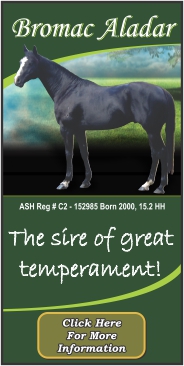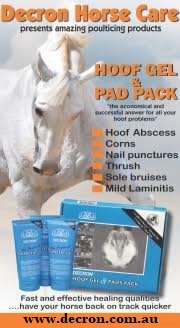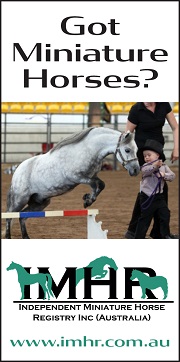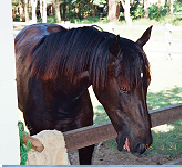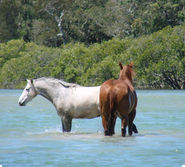Sarah Robinson
Veterinary Officer
Industry & Investment NSW (formerly NSW DPI)
There are many factors that can cause abortion in mares. Non-infectious causes are more common than infectious causes of abortion. Problems associated with the umbilical cord, disorders of the placenta, disorders of the foetus, twins, stress and trauma are examples of non-infectious causes of abortion. Infectious causes of abortion include: bacterial infections such as; E. coli, Streptococcus zooepidemicus, and Leptospira spp.; fungal infections such as Aspergillus; and viral infections such as Equine Herpes Virus type 1 (EHV1).
Infection of horses with EHV1 usually occurs via the respiratory route. When a horse is infected with EHV1, unless the horse is pregnant, you wouldn’t expect to see any sign of infection. Once infected with EHV1 the horse will usually be latently infected for life. This means that the virus lies dormant, in lymph nodes or nervous system tissue, and if the horse is stressed the virus can be activated again.
If a pregnant mare becomes infected with EHV1, or if she is latently infected with EHV1 and is stressed while pregnant so EHV1 is reactivated, the virus can cross the placenta and cause the foal to be aborted. Abortion can occur from 2 weeks to several months after infection or reactivated infection. Abortion usually occurs in late pregnancy but can occur as early as the 4th month of pregnancy. If a mare is infected during late pregnancy, her foal may be still-born or born alive, but die within a few days of birth.
Healthy foals can be infected by contacting infected aborting mares, aborted foetuses or infected foals. These foals are capable of spreading the virus to other horses.
EHV1 is very common in the horse population; therefore mare owners should treat all pregnant mares as if they are at risk of EHV1 abortion.
Prevention of EHV1 abortion
- The most important thing is to avoid anything that will cause stress in a pregnant mare.
- Keep pregnant mares in small groups segregated from all other horses.
- Keep pregnant mares in their established group (don’t disturb their social structure by introducing a new horse to the group or moving a pregnant mare to a new group of horses).
- Do not transport mares late in gestation (within 2 months of foaling).
- Feed and care for pregnant mares so they are in good health (provide good nutrition, control internal parasites, provide a clean environment and shelter and ensure fresh water is available at all times).
- In a stud situation, pregnant mares should be handled and fed by separate staff using separate equipment, or ensure pregnant mares are handled and fed first in the day.
- Vaccination is available as an aid in the control of EHV1 abortion, however vaccine alone will not prevent abortions.
Management of abortions
It is extremely important to have your veterinarian investigate any abortion as soon as possible so that the cause may be diagnosed.
- Remove the mare that has aborted from the paddock to an isolation area.
- The aborted foetus and membranes should be sent to the laboratory for diagnostic testing.
- Abortion/ birth fluids should be thoroughly cleaned away and the area disinfected with a standard disinfectant. Keep other horses away from the abortion site, preferably for at least 2 weeks after the area has been cleaned and disinfected.
- Keep mares that have been in contact with the mare that aborted in small groups, segregated from other horses, until they foal or abort.
Diagnosis
All aborted foetuses, or tissue samples from aborted foetuses, should be submitted to a veterinary laboratory for a definitive diagnosis of the cause of the abortion. This is the most reliable way to diagnose EHV1 abortion. In cases where EHV1 abortion is suspected but the foetus and membranes could not be found, paired serum samples from the mare may help determine if EHV1 was the cause of abortion.
Reporting
EHV1 abortion is a notifiable disease in NSW.
Any case of abortion where EHV1 is diagnosed as the cause must be reported to an inspector under the Stock Diseases Act. The reason why EHV1 abortion is a notifiable disease is because countries we export horses to demand government certification that the horses do not come from a property where there has been a case of EHV1 abortion. Apart from requiring that EHV1 abortion is reported, there are no other legal requirements for this disease.
Since EHV1 abortion is diagnosed when an aborted foal (or tissue samples from an aborted foal) is sent to a laboratory, it is usual practice for the veterinary pathologist to report the disease.
Minimising disruption to breeding enterprises
Where EHV1 abortion is detected and managed rapidly and effectively, disruption to the breeding enterprise will be minimised. Open and honest communication with mare owners about an abortion event is important to facilitate safe movement of horses between properties and avoid further losses.
Acknowledgement
This article is based on information from the AEVA Guide to Management of EHV1 Abortion.










